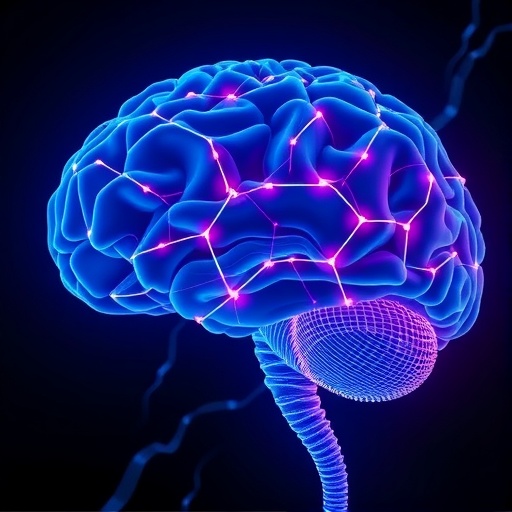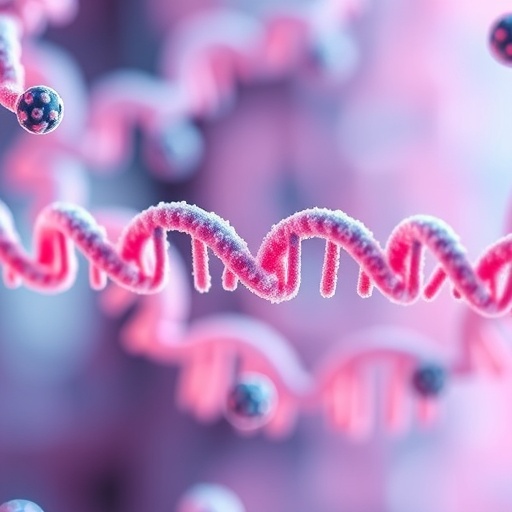
In the intricate realm of the brain’s cellular milieu, microglia stand out as vigilant guardians of neural health and functionality. Long recognized primarily as the tissue-resident macrophages of the central nervous system (CNS) parenchyma, microglia fulfill a myriad of roles that extend well beyond immune surveillance. These multifaceted cells are intimately involved in sculpting neural circuits during development, maintaining synaptic homeostasis, and mitigating pathological insults. Recent groundbreaking research now uncovers a previously uncharted dimension of microglia-neuron communication mediated via lipid metabolism and receptor signaling, shedding light on fundamental processes governing brain homeostasis and neurodegeneration.
Microglia have conventionally been understood to exert their influence through synaptic pruning—engulfing synapses deemed superfluous or dysfunctional—and clearing apoptotic cells that arise during normal brain turnover or disease states. However, this classical view has expanded with the integration of cutting-edge methodologies, such as high-resolution spatial lipid imaging and single-cell transcriptomics, revealing complex intercellular interactions underscored by molecular trafficking of enzymatic agents. It is within this advanced investigative framework that researchers identified microglia’s active role in modulating neuronal membrane composition by delivering lysosomal enzymes critical for lipid catabolism.
Central to this discovery is the enzyme β-hexosaminidase (Hex), a lysosomal hydrolase traditionally associated with the degradation of glycosphingolipids, including specific neuronal gangliosides. Gangliosides are sialic acid-containing glycosphingolipids integral to maintaining membrane organization, receptor localization, and intracellular signaling pathways pivotal for neuronal function. The ganglioside GM2, abundantly present in neuronal membranes, requires precise turnover to preserve membrane integrity and facilitate synaptic transmission fidelity. The team demonstrated that during physiological conditions, microglia secrete the β subunit of Hex (encoded by the gene Hexb) and deliver it directly to neurons, orchestrating the breakdown of GM2 and preventing toxic accumulation.
.adsslot_KcSx73AEkB{width:728px !important;height:90px !important;}
@media(max-width:1199px){ .adsslot_KcSx73AEkB{width:468px !important;height:60px !important;}
}
@media(max-width:767px){ .adsslot_KcSx73AEkB{width:320px !important;height:50px !important;}
}
ADVERTISEMENT
This enzymatic pathway assumes pathological significance in the context of Sandhoff disease, a devastating neurodegenerative disorder caused by mutations in the Hexb gene. Deficiencies in Hex activity culminate in the pronounced buildup of GM2 and its derivatives within neuronal compartments, perturbing membrane microdomains and triggering neuronal dysfunction. The study meticulously characterized this accumulation using unbiased lipidomics coupled with spatial mapping techniques, revealing distinctive patterns of GM2 deposition that evolve both spatially and temporally within affected brain regions. Such precise delineation of lipid pathology underscores the importance of Hex-mediated ganglioside catabolism in maintaining neuronal health.
Beyond neuronal lipid dysregulation, the study unveiled how accumulated GM2 gangliosides become ligands for specific microglial receptors, evoking maladaptive immune responses. The macrophage galactose-type lectin 2 (MGL2), a receptor expressed on microglia, recognizes terminal N-acetylgalactosamine (GalNAc) residues exposed on GM2 derivatives. Engagement of MGL2 by neuronal GM2 initiates a deleterious feedback loop that accelerates neurodegeneration, highlighting receptor-mediated crosstalk as a critical modulatory axis. These findings denote a novel microgliopathy—where microglial receptors become effectors not of protection, but of pathological progression.
Strikingly, this pathogenic cascade could be disrupted by replacing endogenous microglia with peripherally derived microglia-like cells (MLCs). These MLCs, distinguished by altered receptor profiles and enzymatic capabilities, break the destructive communication cycle instigated by GM2 accumulation. The researchers observed that such cellular reconstitution restored biochemical homeostasis within the CNS, abrogated neurodegenerative features, and rescued neural function. This pioneering therapeutic insight introduces the potential for cell-based interventions aimed at correcting microglial dysfunction and lipid metabolic imbalance in neurodegenerative diseases.
The convergence of lipidomics, molecular genetics, and immunology in this study redefines the landscape of microglial biology. It extends the repertoire of microglial functions from purely immunological roles to active participation in lipid metabolism and neuronal support. The bidirectional microglia-neuron communication axis centered on Hex–GM2–MGL2 not only elucidates fundamental mechanisms of membrane homeostasis but also underscores how its disruption can precipitate neurological decline. These insights capitalize on high-resolution spatial technologies that unravel cellular compartmentalization of metabolites and gene expression with unprecedented detail.
From a mechanistic standpoint, the elucidation of Hex delivery pathways from microglia to neurons prompts intriguing questions about intracellular trafficking and secretion modalities within glial populations. Understanding how microglia selectively package and export lysosomal enzymes to neighboring neurons challenges existing paradigms of cell autonomy and intercellular cooperation in the CNS. This discovery further emphasizes the intricate cellular choreography required to sustain neuronal environment, especially under conditions wherein lipid turnover processes are highly sensitive to perturbations.
Moreover, the study’s identification of MGL2 as a lectin receptor mediating microglial response to ganglioside patterns implicates sugar-binding proteins as pivotal modulators within the neuroimmune interface. Pattern recognition via glycan motifs on neuronal surfaces adds complexity to microglial sensing capabilities and points toward glycosylation changes as molecular signals indicative of neural distress. Targeting such lectin-glycan interactions could represent a novel therapeutic axis to modulate microglial activation states selectively and prevent chronic neuroinflammation.
The broader implications of this work resonate throughout the field of neurodegeneration research. By linking ganglioside dysregulation to microglial receptor-mediated neurotoxicity, it illuminates pathways common to a spectrum of lysosomal storage diseases and potentially other proteinopathy or lipidopathy-associated conditions. Therapeutic strategies focusing on restoring enzymatic activities or modulating receptor engagement may converge to halt or reverse progressive neuronal damage in diverse clinical contexts.
Furthermore, the authors’ use of innovative cell type–specific mutants allows unprecedented dissection of gene function in vivo, emphasizing the power of genetic engineering combined with omics technologies to unravel complex CNS physiology. This integrated approach not only advances scientific understanding but paves the way for rational design of targeted therapeutics that harness endogenous repair and maintenance pathways.
In sum, this study uncovers a novel microglia-neuron communication axis mediated through β-hexosaminidase-dependent ganglioside turnover and lectin receptor signaling, critical for brain homeostasis. By revealing the interplay between lipid metabolism and immune recognition, it identifies a new form of microgliopathy underlying neurodegeneration and demonstrates the therapeutic promise of microglial replacement strategies. As the neuroscience community continues to explore the dynamic roles of glia in health and disease, these findings mark a significant leap forward, offering hope for innovative treatments for currently incurable neurological disorders.
Subject of Research: Microglia-mediated lysosomal enzyme delivery and ganglioside turnover in neuron-microglia crosstalk maintaining CNS homeostasis and its disruption in neurodegeneration.
Article Title: Microglia–neuron crosstalk via Hex–GM2–MGL2 maintains brain homeostasis.
Article References:
Frosch, M., Shimizu, T., Wogram, E. et al. Microglia–neuron crosstalk via Hex–GM2–MGL2 maintains brain homeostasis. Nature (2025). https://doi.org/10.1038/s41586-025-09477-y
Image Credits: AI Generated
Tags: advanced methodologies in neuroscience researchcentral nervous system macrophageslipid catabolism and brain functionlipid metabolism and neurodegenerationmicroglia function in brain homeostasismicroglial influence on neuronal membranesneuroinflammation and microglial activationneuronal communication and synaptic pruningsingle-cell transcriptomics in microglia studiessynaptic homeostasis and neural circuitstherapeutic targets in neurodegenerative diseasesβ-hexosaminidase enzyme role in brain health





